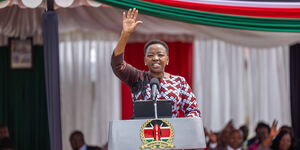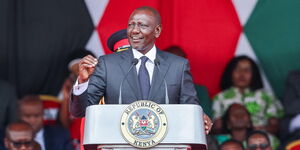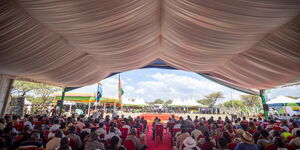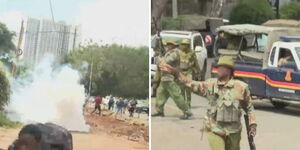A special audit report from the Office of the Auditor General has revealed how billions of shillings found their way into the pockets of non-essential health workers in different hospitals across the country.
According to the report, some hospitals opened separate bank accounts to allow them to transact their loot while others had no separate budgets, work plans, procurement plans or training plans for Covid-19 related activities and utilization of these funds leading to the loss of billions of shillings.
The country’s largest referral hospital, the Kenyatta National Hospital (KNH), for instance, had in place a plan to operationalize a 20-bed facility at the Infectious Unit at Mbagathi Hospital at a cost of Ksh150.49 million. The plan is dated February 26, 2020.
The plan envisaged enhancing the existing KNH 6-bed capacity in the Infectious Disease Unit ward to a 20-bed capacity one.
The plan, however, did not provide timelines on the implementation of the various renovation activities. On the contrary, there was no evidence that Kenyatta National Hospital had in place work plans to guide the utilization of the funds.
According to the report, it was further established that some hospitals made payments to non-eligible staff who were not Frontline Health Workers contrary to the Salaries and Remuneration Commission (SRC) circular which had clearly indicated that only the Frontline Health Workers should be paid.
The report indicates that Moi Teaching and Referral Hospital paid an amount of Ksh2,695,000 as Allowances to non-eligible staff. This trend was also replicated in other major facilities across the country.
The report further reveals numerous inconsistencies at the top level in the Ministry of Health showing that in the dates within which various procurement activities were indicated to have occurred, the country incurred losses of up to Ksh6,505,802.
The procurement of assorted office stationery by the Ministry of Health, for instance, was done through Request For Quotation (RFQ) to eleven bidders, all of whom were awarded tenders to supply the goods.
Section 84 (1) of the Public Procurement and Asset Disposal Act, 2015 requires the head of the procurement function to review the tender evaluation report and provide a signed professional opinion to the Accounting Officer.
The Ministry of Health has been accused time and again of leading to losses of public funds through flawed procurement methods.












